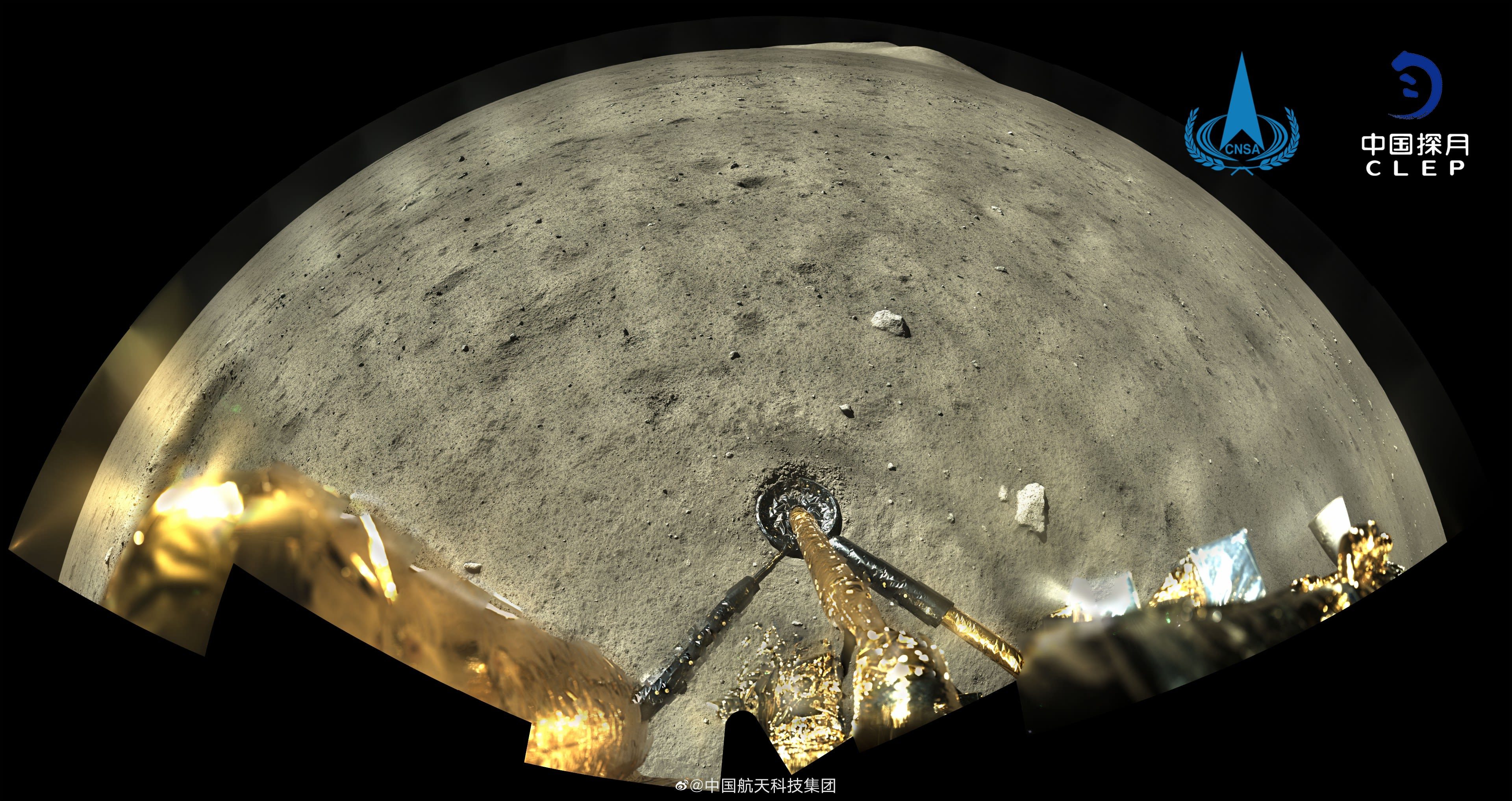China just brought moon rocks back to Earth for the first time in its history

China’s Chang’e 5 mission successfully delivered samples of lunar rock and dust to Earth on December 17. It marks the first time in 44 years that moon rocks have been brought back to our planet, since the Soviet Union’s Luna 24 mission in 1976. It’s also the first time China has ever pulled off a sample return mission.
How it happened: The sample capsule landed in Inner Mongolia at a little after 2:00 a.m. Thursday local time. Recovery teams in trucks and helicopters located the landing site shortly after and secured the sample container.
The drop-off is the culmination of a 23-day mission that began on November 23, when China launched Chang’e 5 from a site on Hainan Island. The mission’s lander touched down on the moon eight days later and immediately began drilling. It collected lunar material from below the ground as well as from the surface. The goal was to collect at least four pounds and bring it back to Earth.
The samples were stored on an ascent vehicle that brought them back to an orbiter on December 6. The mission headed back to Earth on December 13, and now we finally have new moon rocks to study.
New science awaits: While Apollo-era moon rocks are estimated to be about 3 to 4 billion years old, the material collected by Chang’e 5 is from a site in the northwest region of the moon’s near side called Mons Rükmer. This area was formed more recently, and the rocks here are thought to be only about 1.2 billion years old. That means scientists studying the material could learn more about the evolution of the moon and test out new techniques for estimating the age of geological samples from other planets, moons, and asteroids.
China’s big day: The Chang’e lunar program, which includes two deployments of lunar rovers to the moon’s surface, has been remarkably successful. Although Chang’e 5 was a short mission, it’s one of the most complicated projects undertaken by the Chinese space program so far. The country is far from done with the moon—Chang’e 6, a second lunar sample return, is slated to launch in 2023 or 2024.
Deep Dive
Space
How to safely watch and photograph the total solar eclipse
The solar eclipse this Monday, April 8, will be visible to millions. Here’s how to make the most of your experience.
How scientists are using quantum squeezing to push the limits of their sensors
Fuzziness may rule the quantum realm, but it can be manipulated to our advantage.
The great commercial takeover of low Earth orbit
Axiom Space and other companies are betting they can build private structures to replace the International Space Station.
Stay connected
Get the latest updates from
MIT Technology Review
Discover special offers, top stories, upcoming events, and more.